“Classified” is a series spotlighting some of the more powerful lessons faculty are teaching in Haas classrooms.
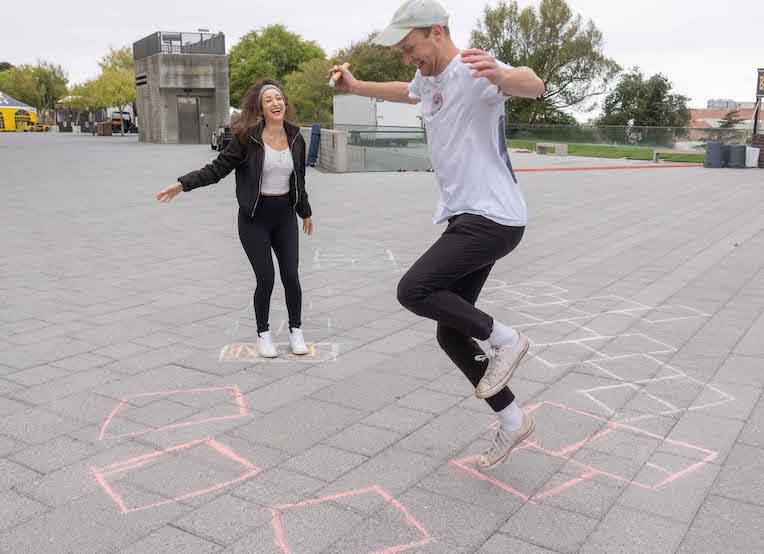
High above campus in Memorial Stadium last Wednesday, George Milanović, MBA 22, is lying on the pavement drawing hopscotch squares. It’s the first sign that this is not the usual business school class.
His project partner, Laila Samimi, MBA 22, stands nearby. She translates what Milanović is doing.
“The shorter path is the point of no return if the earth’s temperature rises two degrees Celsius—the path of corporate greed and individualistic behavior,” Samimi says. “The other is a path of sustainability. It’s a longer path and it’s harder.”
Heavy stuff for a child’s game, but the hopscotch project makes perfect sense as art created in a new course called Sustainability, Art & Business.
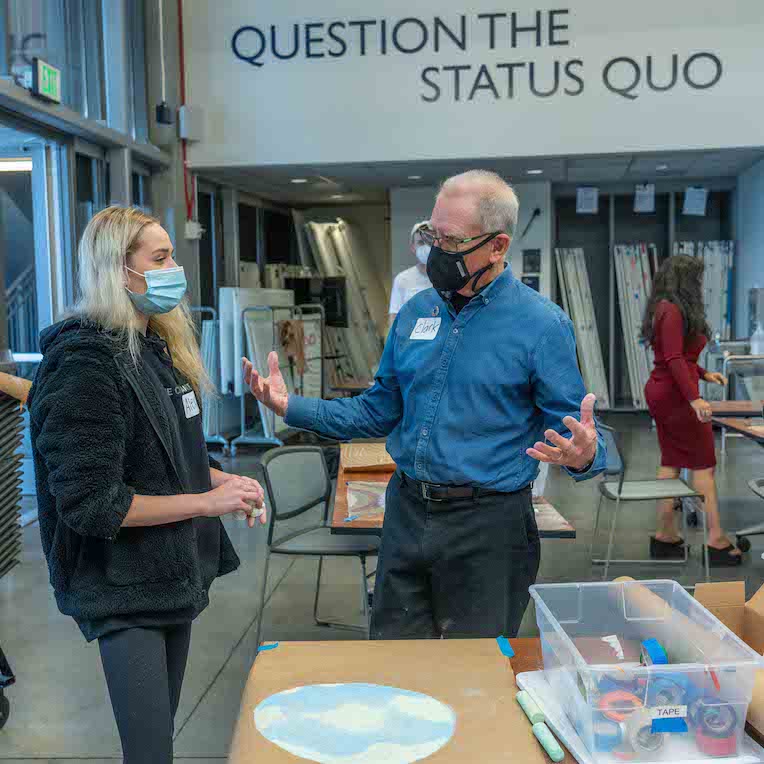
The course calls on 25 undergraduate and MBA students to explore the meaning of sustainability—and the human response to global warming—through art.
“My hope is that this art will help people to see things differently–to reframe problems and challenge our comfortable assumptions,” says Clark Kellogg, a continuing lecturer with the Haas Professional Faculty and the Haas artist-in-residence. “We’re using art to invite people into a new relationship with sustainability, to inspire a different conversation that’s not about guilt or shame.”
“We’re using art to invite people into a new relationship with sustainability, to inspire a different conversation that’s not about guilt or shame.” — Clark Kellogg
The course, taught in the Berkeley Haas Innovation Lab, builds upon a series of classes Kellogg has taught at Haas over the past decade—from Creativity Lab to Art from Business to the pioneering Design Thinking class.
Kellogg’s classroom method combines experiential learning-by-doing coupled with deep collaboration and peer-to-peer-critique, all on display in the new course. This morning, the class is focused on design, which is the second step of the three-step process for making public art that includes research, design, and execution.
Kellogg grabs a large roll of paper and starts cutting.
“Let’s just start to play,” he says, as the class splits into small groups, clutching chalk, recyclable materials, and other supplies.
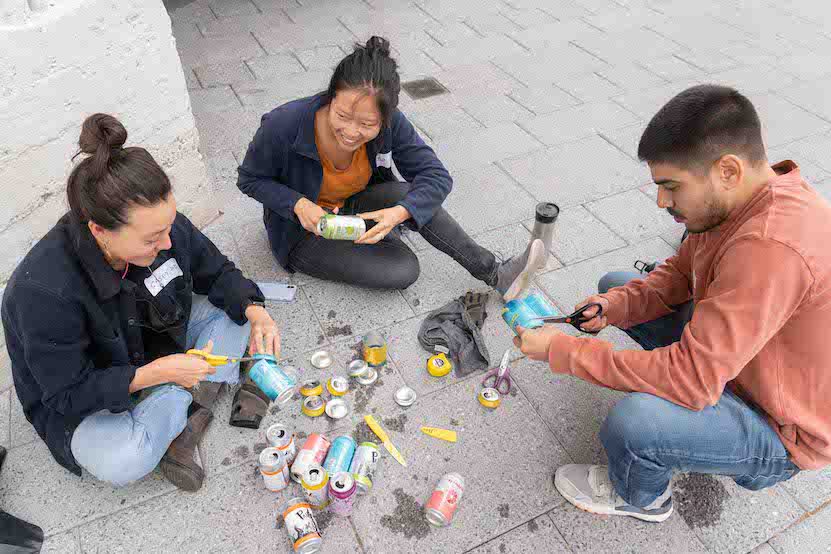
Preparing for the pop up
The idea is to finish something today that can be transferred to the Haas Courtyard next Wednesday to share during a pop up show.
Casey Dunajick-DeKnight and her team sit outside cutting recycled seltzer cans into shiny, flat metal pieces that will be used to craft sea creatures that are disappearing from oceans. Dunajick-DeKnight says she’s inspired by origami and found that aluminum is a flexible material “that cuts like paper.” Kellogg says he’s pleased that the cans are finding a second life as aluminum squid and crabs. “If it’s single use, and we use it twice, we cut the problem in half.”
Meanwhile, Zarine Kakalia, BS 22, is using chalk to draw a river that’s been diverted so many times that there’s no water left for the salmon. “I thought this was an interesting way to address resource constraints,” says Kakalia.
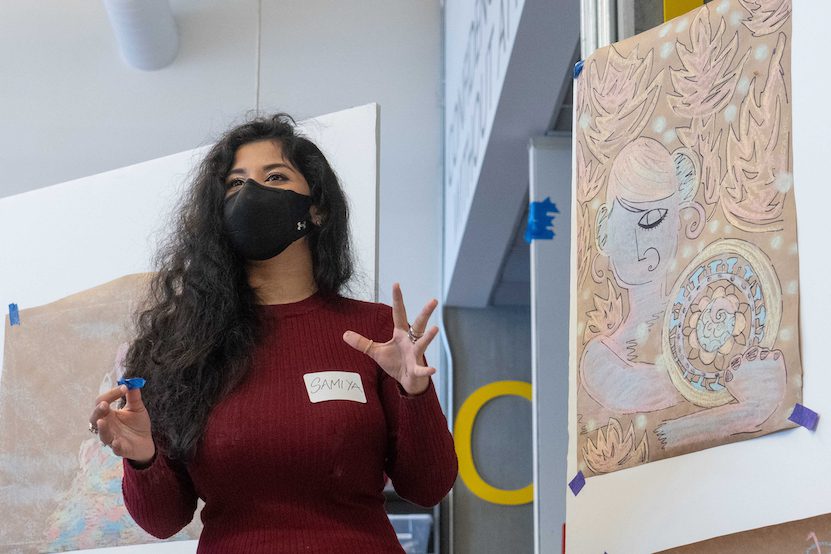
The class spends an hour working on projects before gathering for storytelling, where one group member describes the project to the class. Rachel Stinebaugh, MBA 22, shares an idea for a game of courtyard twister, with the dots representing vanishing coral reefs. Samiya Mehreen, BS 23, explains a drawing that explores the role of women artisans in developing countries, who are balancing sustainability and business. And Vincent Chang, MBA 22, says his drawing should provoke people to think about the future of a sky obscured by greenhouse gases. “It’s rainbow versus anti-rainbow,” he says.

Kellogg offers praise and gentle prompts for students to take their ideas to the next level.
Before class breaks up, the students head outside to check out the hopscotch game. One student asks Kellogg if he remembers how to play hopscotch. Kellogg pauses, but then obliges, skipping through the squares as the group cheers him on.
Making a plan
Afterwards, the students must decide whether to transfer their projects in some form to the Haas courtyard or recreate their projects on site. The group votes to create their art on site. “Drawing time will be critical,” Kellogg warns, and the group agrees to plan more during the week on Slack, and meet at the courtyard by 10 a.m. on Wednesday.
“It will be so great to look at the chalk drawings on the ground and think: ‘We did this,’ ” Rosa Huang, MBA 22, says.
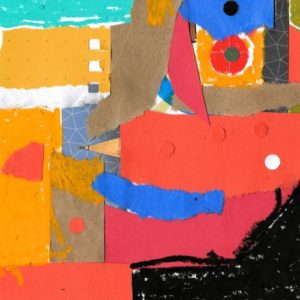
After next Wednesday’s event, a second courtyard pop-up show is planned for December, followed by a final gallery reception of student art.
Throughout the course, the class will read books like “Think Like an Artist” and “In Pursuit of Inspiration” and news articles that detail the links between taking walks and creativity and the importance of taking time to be alone to just think. (One of Kellogg’s personal projects was to document his commitment to making art daily.)
Among the students, many of whom are involved in sustainability-focused student groups and working at environmentally-related internships, the consensus is that the class is fresh and fun, tapping a different part of their brains.
“As business school students we are often comfortable with data and frameworks and this class helps us break away from that and be creative and think of things on the spot,” says Alejandra Arrué, MBA 22. “That’s why we enjoy the class.”